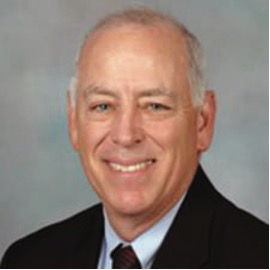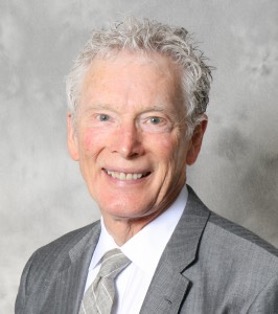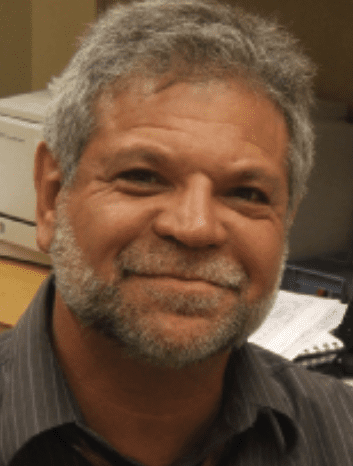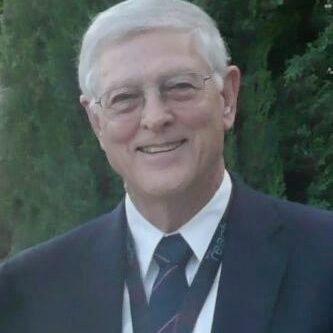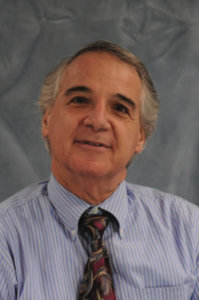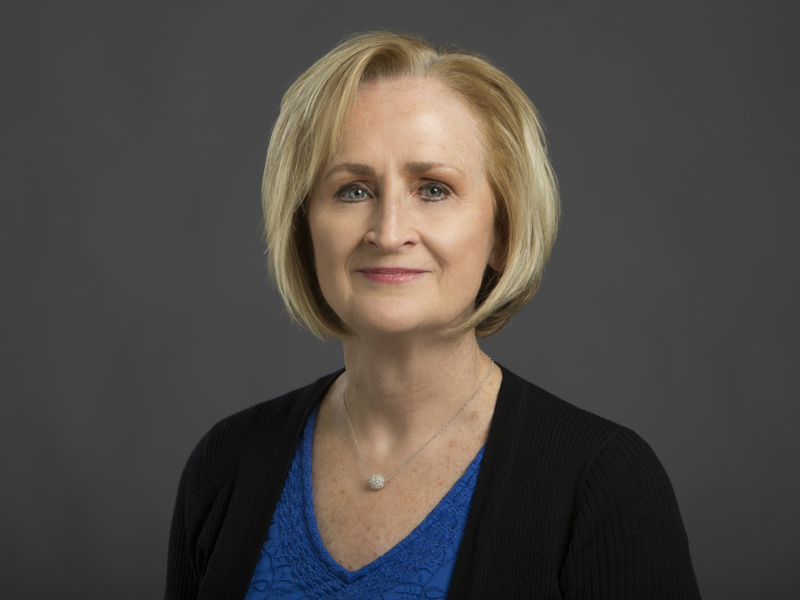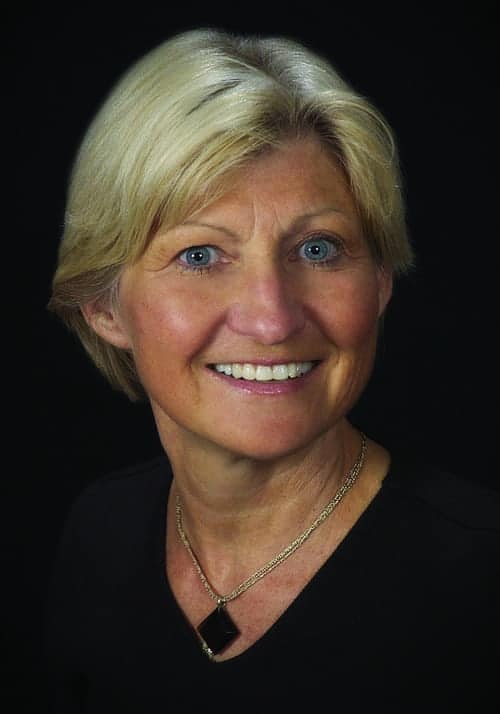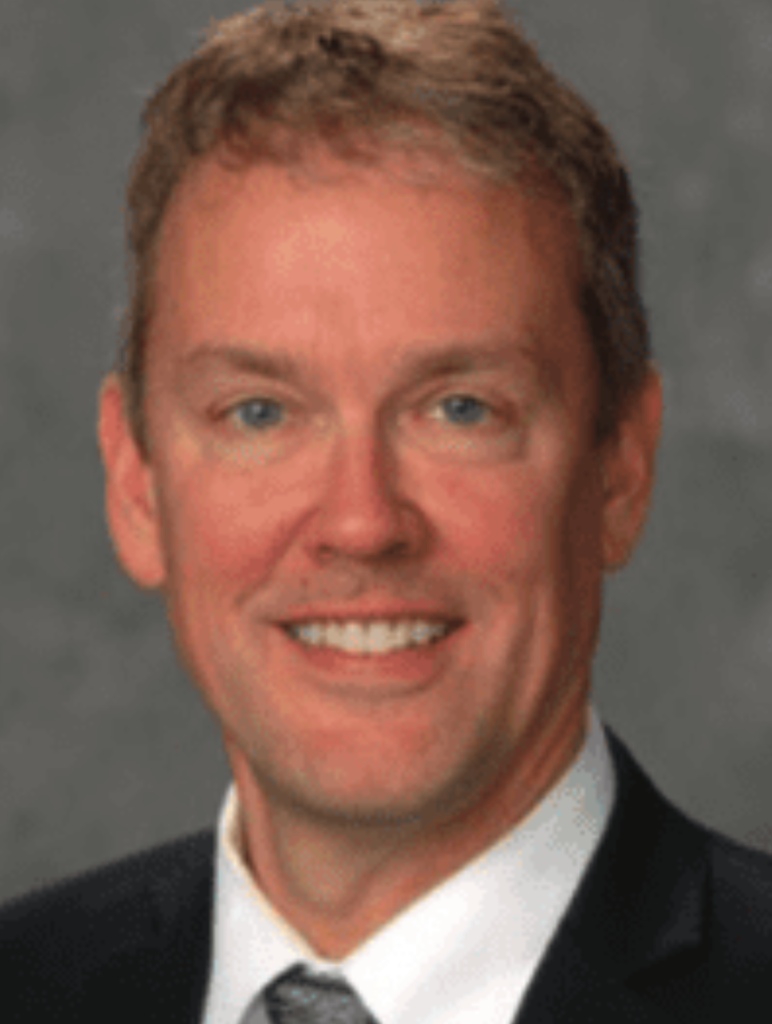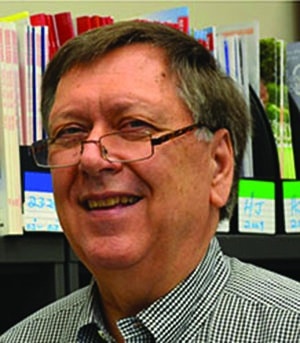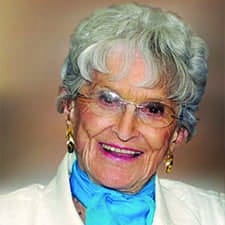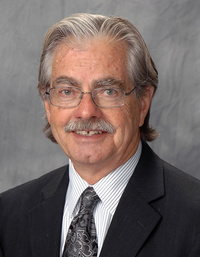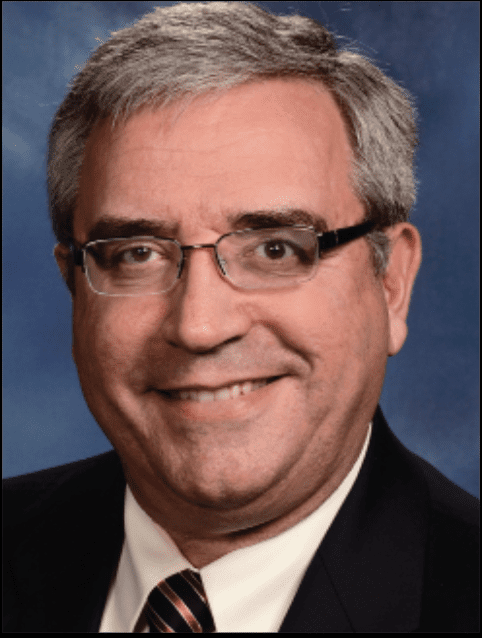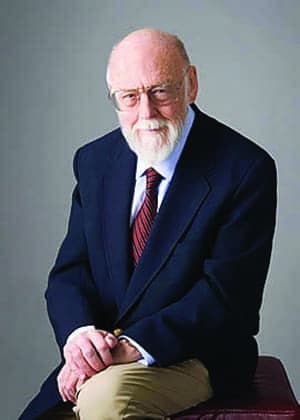Life as an Audiologist: Stories Too Good Not to Tell
Even the best hearing care professionals make mistakes or find themselves in unexpected situations. Here are some humorous and poignant stories from “the trenches” of audiology.
Career Experience | June 2017 Hearing Review
The lighter side of working in hearing healthcare
… with contributions from Karen Jacobus, AuD; Jerry Northern, PhD; David Hawkins, PhD; Dennis Van Vliet, AuD; Robert Sweetow, PhD; Wayne Staab, PhD; Michael Valente, PhD; Patricia McCarthy, PhD; Ruth Bentler, PhD; David Fabry, PhD; Dean Garstecki, PhD; Dick Danielson, PhD, & James Jerger, PhD
Marshall Chasin: Dr James Jerger recently came out with an autobiography of his life as an audiologist, and after hearing that title, it got me to thinking about all of the odd, funny, or ridiculous audiology-related things that have happened over the years. And what better title than Life as an Audiologist, so we thought that we would “borrow” it from one of the founders of our field and also use it as an homage.
One of my first “odd” experiences in audiology—other than perhaps climbing over Gerry Studebaker to introduce myself to his then wife, Robyn Cox—was some work that I did with Gus Mueller. Strange things tend to happen whenever Gus is around, so it was a perfectly reasonable decision to write this article with him.
Gus, I recall that I was writing a Page Ten article for you back in the 1980s, when you worked for Hearing Journal. This was before the internet, so our communication was by landline, fax, or passenger pigeon. I had sent you a draft, and for my contact numbers, I had my telephone, fax, pager, and being me, I just added the phone number of the local pizza place in Toronto. I was late getting the paper in, and you called me to see how it was going. Halfway through our telephone meeting, the doorbell rang, and Gus had ordered me a medium pizza with anchovies and black olives! And thank you for paying for it, but I don’t really like black olives!
Gus Mueller: Well, as you might recall you had told me you wouldn’t be able to get the paper finished that night as you had to cook dinner for your children. I did most anything to get a paper wrapped up to meet a deadline back in those days. So that’s your best story?
Chasin: Well, there is this one. Years ago I was very interested in meeting Ray Dolby who was at the same Audio Engineering conference that I was attending. I had taught students about Dolby Sound as a noise reduction technique for music and speech on tapes for years as part of my adjunct duties in an acoustic phonetics class. And there was Mr. Dolby standing near his booth! I approached him and, in detail, started to explain to him how his own system worked, along with graphs I was drawing on scraps of paper. Being a gentleman, he just smiled and listened quietly, but was slowly backing away. Of course, I followed him and soon had him backed into a corner, with the rest of the Dolby booth staff, subtly trying to rescue him from me. I am sure that Dolby has forgotten about that restraining order they took out on me by now!
Mueller: Stalking famous people is certainly one way to create an interesting tale, but I think a lot of our audiologic stories come from unusual patient encounters. Who hasn’t had the experience of getting a very weird reverse air-bone gap, only to realize that they had conducted all the bone conduction testing with the bone vibrator hanging on the booth wall? Just last week, my wife Karen Jacobus, an audiologist, came home with a good one for me. She had a referral slip saying that the patient had chronic unilateral ear infection. Once the patient got settled, she asked him if the problem was with his right or left ear. He replied very matter-of-factly, “I guess it’s neither; the Doc tells me it’s my middle ear.”
When I was in Denver in the 1970s, I remember Jerry Northern telling a story about a guy who wanted Jerry to evaluate his tinnitus. Jerry told him he’d have to come in, but the guy said that he had recorded it, and would simply send Jerry the tape. The tape arrived, and Jerry couldn’t resist listening to it. Not too surprisingly, it was blank. A few days later the guy called to ask if Jerry had listened to his tape. Jerry told him he had, and that the tape had nothing on it. “No, no,” the guy said, “You’re wrong. I listened to the tape myself and I heard the tinnitus; it’s on there!”
David Hawkins had an interesting patient when he was at the Mayo Clinic, again showing that maybe the patient isn’t always right, but also that you need to pick your battles:
I loved having engineers as hearing aid patients because something interesting always happened. One engineer came in for a 30-day post-fitting follow-up visit and announced that the drying kit for his hearing aid didn’t work; he had data to prove it and wanted a refund. He produced a graph of the weight of the drying bar measured over a 2-week period with a weighing device he said was accurate “down to a microgram.” The line was flat, meaning the weight of the absorption bar had not changed. He argued that, if the bar really worked and was actively absorbing moisture, then the weight should be increasing over time. I suggested an alternative hypothesis: maybe the moisture evaporated. He gave me an exasperated look and a deep sigh. Realizing this topic was not worth pursuing with my engineer, I told him I appreciated his experiment, thanked him for his data, and said I would be happy to refund his money for the defective drying kit. With engineers sometimes the path of least resistance (unintended pun) works well!
Dennis Van Vliet has a good one from back in his early clinical days as an educational audiologist:
There was one child at our local testing site that was available for testing but we had no luck getting him to cooperate. There was a question that some of his inconsistent behavior was due to hearing loss. He simply would not cooperate with any attempt to condition him to standard or play audiometry, and he quickly habituated to VRA. One afternoon, three of us were determined to keep working until we could clear or refer him for treatment. On that day, we noted that, when we left him alone, his behavior was reasonable. We decided that maybe that was the secret. We quickly showed him how the M&M Tangible Reinforcement Operant Conditioning device worked, gave him one candy when we monitored him through a response, and then left the room. We soon realized that he was adding successively additional behavioral motor responses to each stimulus. If he happened to be scratching his nose when the signal was presented on one occasion, he’d scratch his nose first and then push the button to get his M&M on the next response. He finally worked himself up to a multiple response routine that followed each stimulus: nose scratch, head pat, hop on one foot, turn around, shout, and push the button. I can’t remember how many responses he added before he tired out, but he was pretty good at it. We finally got our audiogram, and plenty of laughs at his antics.
Chasin: When I was a student audiologist, I was doing a history on a woman and I asked about any operations. She said, “just a mastectomy,” and, assuming that she had just said “mastoidectomy” I asked “which side?” Even when her face got red and she told me it was none of my business, I couldn’t understand why she was so angry with me.
Staying on the line of embarrassing clinical situations, here is a story from Robert Sweetow:
A long, long time ago, when I was getting my PhD from Northwestern, I worked part-time for an ENT doctor in the Chicago suburbs. One of my first patients there was a nun. Given the fact that I grew up in a predominantly Jewish neighborhood, I had virtually no previous interactions with nuns, so I wasn’t quite certain how to place headphones (these were pre-insert days) since her head was covered. So I politely requested that she remove her habit (not knowing that the habit referred to her full tunic [dress], as opposed to the headdress which is called a cowl or wimple). I knew I made a mistake when she looked at me and coyly stated, “I will if you insist, but where exactly do you plan on putting those earphones.”
And to prove that we all make mistakes from time to time, here is what happened to Wayne Staab:
At one time, galvanic skin response (GSR) audiometry was used to test malingerers, especially those claiming their hearing was poorer than what was represented, and especially when it related to financial compensation. GSR audiometry was a conditioning process that coupled a tone with a shock that could be varied in its intensity as applied to the fingers; not enough to seriously hurt the person, but enough to jolt their hand when applied (depending on the level). The obvious end result was to condition the patient to the tone/shock combination, and then present the tone alone and observe the graphic printout to see if it provided a response in anticipation of the shock, suggesting that the tone was heard. As graduate students involved in clinical evaluations, we were often given this task, and for a number of non-disclosed reasons, really enjoyed giving this test. On one occasion (actually more than once), the man being tested never responded to the test signal, in spite of raising the shock level to its highest. We could just see that with each shock level increase, his hand jumped higher. He eventually emitted some very choice words about us shocking him. Only then, did we realize that we had never put the earphones on him.
Mueller: Wayne’s GSR blurb just reminded me of a fresh-out-of-school event that happened to me, back in the early 1970s when I had my first Army audiology position:
The draft was still going strong back then, and every Wednesday around noon, the Army bus would arrive at our clinic, filled with all the new recruits who had failed their hearing testing that morning at the induction station. Nearly all were malingering (their last chance to avoid going to Viet Nam), and we had the afternoon to determine their “true” hearing, so they could board the 5 PM bus back to their housing. All were first screened for a Type V Bekesy—if positive, they went into the “probably malingering” category. Toward the end of the day, when all else had failed, like Wayne, we too did the GSR. I was the only officer, working with several technicians, so I was designated the official GSR guy. The technicians would get the patients ready, one by one, and put them in a single-person booth, tucked away in a store room down the hall from our main clinic. Let me add, it was summer in San Antonio, with no air conditioning. I was sitting at home having dinner after work one of those Wednesdays, when I realized that there might have been one more GSR to do. Just to be sure, I went back to the clinic—it was now about 8 PM or so. Sure enough, sitting in that back booth, in the heat and dark was my last patient of the day. He was dripping with sweat, and had taken off the electrodes and his shirt. His first words to me were, “Okay, okay. You caught me. I have normal hearing.” He thought the whole thing was part of our test protocol!
Chasin: Not all young audiologists make these rookie mistakes, but some seem to be stuck in the technology of their time. I recall going with my kids, then in grade school, to the local library and asking where the card catalog was. The librarian looked at me blankly and said that those haven’t been around in decades. Michael Valente of Washington University has this story:
I was mentoring a student for her Capstone. She came to my office to mention she found this great article, but it was published in a year that was not available on the medical school library website. I proceeded to place my fingers on the desk as if in a walking motion. She asked what did that mean. I said, “Walk to the library, go to the stacks, pull the article from that journal held in the stacks, and Xerox it.” She proceeded to say “You can do that?” If that wasn’t enough, a second student a week later did exactly the same thing.
Mueller: A lot of good stories involve happenings at audiology meetings. Some are so good that we’re not going tell them here. But, here is one we can tell from Patti McCarthy:
At the 1993 AAA Convention in Phoenix, Greg Givens, Mark Lowes,—an attorney working with the Academy—and I were part of session on scope of practice and licensure. We were on a fairly large stage in front of the group. All was going well with my part of the presentation until, suddenly, I heard a loud crash and the audience gasped. I turned around to see that Mark had leaned back in his chair and fallen off the stage! While Mark suffered no broken bones (that I know of), he did have considerable embarrassment. I powered on, but not surprisingly, I don’t think the audience heard another word I said!
And speaking of falling, here is one from Ruth Bentler, which happened at a state audiology meeting:
I recall the time when I was doing a two-hour seminar to a large group of audiologists at a state meeting. I should mention that this was during the days when it was fashionable for women to have large shoulder pads in their dresses. About midway through my talk, I felt something hit my arm, and I looked down and there was one of my shoulder pads lying on the floor. I continued lecturing, and bent down and picked it up, then looked around to see where I should put it. There wasn’t a podium on the stage, and it seemed a bit rude to shove it back into my dress in front of everyone, so I just continued to hold it in my hand during the next hour of my talk—albeit it with a rather lopsided profile.
Chasin: And I know there is a good Dave Fabry story, also from a state speech and hearing meeting. I’ve heard many versions of this, so thought it would be good to have Dave tell it himself:
The year was 1993, and I was invited to speak at the Arkansas Speech and Hearing Association (ARSHA) meeting in Little Rock. When I arrived, I was told that the opening night party was a barbeque, followed by karaoke. In addition, I was informed that it was customary for the guest speakers to kick off the festivities with a version of their favorite song. Given that I am not known for my singing voice, I immediately began racking my brain for a number that required little vocal talent and would capture the spirit of the event. Throughout the meal, my anxiety level increased, and as things were wrapping up, I decided to run to the restroom to clean up and practice my song prior to my “performance.” I dashed out of the banquet hall and into the restroom, and headed straight for a stall to go over the words and phrasing. In the meantime, I started to hear that others had the same idea, but it became quickly apparent that the voices in the restroom had fundamental frequencies roughly double mine. In my haste to make a break for it, I had inadvertently entered the women’s room—not the men’s. I immediately pulled my feet up, to hopefully hide my error. I began to hear the announcement over the public address system, “OK, we need our guest speakers (there were three of us) to come up front and kick off the karaoke event.” I ignored the first several announcements from the security of my bathroom throne, but when the announcer started calling for me by name, I had no choice but to emerge from the stall to a bathroom full of audiologists and speech language pathologists with a greeting of “Hello Ladies,” march up to the front of the hall, and now without a bit of nervousness, sang a pitch-perfect version of “On the Road Again.” Nailed it! Until the next morning, when the conference chair was introducing me, and reminded me that she was one of the people in the bathroom.
Mueller: It seems like a lot of the good stories I’ve heard over the years also are related to events that happened while traveling. One that immediately comes to mind goes back to the 1970s, and involves Dean Garstecki. He was scheduled to interview for an audiology job at Purdue University in Lafayette, Indiana. Now the versions of the story that I’d always heard were that Dean didn’t know that there were two Lafayettes, or that Purdue wasn’t in Louisiana. I thought it might be best to get the straight scoop from Dean:
In the spring of 1975, I was invited to interview for an open audiology position at Purdue University. I held a faculty appointment at UC Santa Barbara at the time. I asked my local Santa Barbara travel agent to do what she could to get me to Lafayette as late as possible on the Sunday before my Monday morning interview. The next day she delivered an airline ticket and itinerary to my office. It started with a short hop from Santa Barbara to Los Angeles, on to Dallas, ending in Lafayette. I called the chair at Purdue, Carl Binnie, and informed him I’d be coming in late on a Texas International flight. I arrived at my destination, and as I was walking to baggage claim, I heard my name being paged. I was informed that Carl Binnie wanted me to call him at a pay phone. I wondered why he wasn’t just meeting me at baggage claim as planned, but I made the call. Carl informed me that Texas International didn’t fly to Indiana. He had done some detective work and found out that they did fly to Lafayette, Louisiana. As I was talking to him, I looked out at the wall behind baggage claim which read, “Welcome to the Bayou State.”
This story has been told so many times over the years, by so many people, that sometimes people start telling it to me. I have to say, “Stop—I know the story—I am that guy!”
Chasin: So, Dean is blaming the whole thing on his travel agent? Good move! Curious minds want to know, did he get the job?
Mueller: Yeah, he finally made it to Purdue (although his luggage was lost in the mix-up), did the interview, was offered, and accepted the position.
Thinking about those early days of travel, Jim Jerger was probably the first audiologist to travel the world doing talks. He has some great stories. I recall one, where he was in a foreign country talking to a small group of audiologists. They had him scheduled to do his talk in the hotel bar—the very same bar the attendees had closed the night before. The day did not start well, as at the time the talk was to begin, he was the only person in the bar. Things finally did get started, but the sun was shining directly into a huge window in the front of the bar, making it impossible to see any of his slides. There were no shades to pull. The audience was becoming restless. Just as he thought his entire talk was doomed, three men suddenly appeared in painters’ uniforms, carrying black paint and brushes, and immediately set to work painting the entire window black. The talk proceeded without further delay.
Chasin: Well, it was Dr Jerger after all! Another person who was traveling a lot in those early days giving talks was Marion Downs. And she certainly had a lot of stories, including one about her portable audiometer being blown up by a grenade in Viet Nam. Jerry Northern, of course, heard Marion’s stories many times, so he volunteered to tell one of them:
In November of 1979, Marion was on her way from Denver to the ASHA convention in Atlanta. When the airplane reached about 200 feet off the ground, the pilot suddenly dampened the engine and the plane descended immediately and crashed into a field, hitting an electrical installation of some sort. The crash was sudden and flames immediately broke out around the plane. Marion was the first passenger to reach the exit door, but she was unable to get the door open. Suddenly a flight attendant appeared, opened the door and shouted for Marion to jump on the slide and get out as quickly as possible. Marion whizzed down the slide, hit the ground, and began running away from the plane and flames as fast as possible—she was a marathon runner in those days. She claims that she was two blocks away before anyone else came out of the plane! She knew it was a serious problem when two men ran past her and she realized it was the pilot and co-pilot! Fortunately, everyone evacuated safely and the plane never blew up. Marion came back to the clinic that afternoon complaining that she had left her coat on the plane. I admit I was a bit surprised when she told me she had a new airline reservation the next morning for her trip to Atlanta.
Mueller: I know Jerry likes to tell Marion stories, but he has quite a few of his own. The one below from Jerry is my favorite:
In 1984, I found an opportunity to join an adventure travel group who had obtained special permission to take a small group of trekkers through Kathmandu, Nepal, to the base camp of Mt Everest, situated at 17,300 ft elevation. The trek involved 21 days of rugged hiking in the Himalayas at altitudes higher than 13,000 ft, and although expensive, the call of the adventure was too strong for me to pass up. Then, I had an inspiring thought that if I justified my trip as a scientific project, perhaps there would be some tax advantage to help defray my expenses.
Accordingly, I developed a demonstration project to evaluate otitis media and the Eustachian tube function of native Sherpa children who live at high altitudes with tympanometry measurements. The project was nearly scuttled when I was informed that there was no electricity in the schools or in the villages. Undaunted, I called Poul Madsen, the Danish developer of the Madsen Impedance Meter, and asked if, by any chance, they had a battery-operated model ZO-70. He indicated that they had a battery powered prototype that I would be welcome to take with me to Nepal. He cautioned, however, that it was big and heavy as it required 24, full-sized D batteries. Excitedly, I called the adventure company about the equipment (including a screening audiometer) I was bringing on the trek, and they informed me that I would have to hire my own Sherpa and yak to carry this extra baggage to Khumjung. That was agreeable to me, and I was quickly back on track and notified the school principal of my plans for testing the school kids and the date I would arrive—with my yak and Sherpa. My good friend, Darrel Teter, an audiologist from Denver, was interested in the trek and agreed to help me with the project.
We arrived at the Khumjung school on the 14th day of our trek and were ushered into a cold, dark, and damp schoolroom where we set about getting things in order for testing the kids. When I opened the ZO-70 case, I found the batteries had taken quite a beating on the back of the yak, as they were all askew and several were dead from the cold nights. Nonetheless, we got the equipment running. With otoscope in hand, as the first scruffy little students lined up, eager to be tested, I asked Darrel for the ZO-70 probe-tips. I saw the shocked look on his face as he told me he thought I brought the probe-tips.
Chasin: We’ll have to ask Jerry if he still wrote off the trip as a business expense. I guess we should follow up a mountain story with a desert story. This one is from Dick Danielson. We’re pretty sure he didn’t claim this trip on his taxes.
During my Army days, I once served in Saudi Arabia with 11 other audiologists to support redeployment physicals after Operation Desert Storm, and periodically visited many hospital sites. One day, I was standing in a chow hall line when a sergeant turned to me and asked if I was new to the unit. “Oh no,” I answered, “I’m just visiting. I’m with these audiologists.” “Huh? Did you say SAUDIOLOGISTS?” he questioned. That name seemed perfect and was exactly the boost in morale that our task force needed at the time. We adopted the unofficial nickname of “Combat Saudiologists” and (like combat pilots) even started painting symbols on our multi-person audiometric testing vans—one outline of a camel for every 500 soldiers tested!
So Gus, with all your worldly travel, you must have travel tales to tell?
Mueller: Oh yeah, there is probably a story for every country, but most don’t directly relate to audiology. Here is one that does, however, which we might call “lost in translation.”
Back in the late 1990s, Tom Powers and I were putting on a day-long hearing aid workshop in Sau Paulo. It was a huge crowd, about 250 attendees—mostly all young women. All during the day, our talks were being simultaneously translated into Portuguese, and essentially all attendees were listening to the translated version via headsets. The day was winding down, and we were talking about some problem with CIC fitting cases. I presented a case regarding a young woman who had a very unusual sharp first-bend in her ear canal, which caused big problems with CIC retention. As I was describing the case, a woman in the front row of the audience interrupted me, and asked what pathology caused this ear-canal condition? I replied that it probably wasn’t a pathology per se, but more than likely was a “congenital condition.”

It had been a long day, and our interpreter probably was getting tired, but, for whatever reason, what was translated to the audience was: “The woman couldn’t wear her hearing aids because she had problems with her genitals.” There of course is always a time-delay with these sort of things, so, as I started to go on, all of sudden there was this huge laughter and shouting, followed by clapping from the audience (who had quickly figured out what I really had said). I, of course, had no idea what was funny. Finally, Ieda Russo, an English-speaking audiologist from the audience came up to the stage and told me what was going on. Given that it’s always good to end with a big laugh, we quickly shut the presentation down, and focused our thoughts more on “Caipirinhas” rather than “Congenital” things!
You know Marshall, since we started this article off with a mention of Jim Jerger, I thought it might be appropriate if we ended with a story he sent us. But first, a little background: One of the first audiology texts, published in 1963, was Modern Developments in Audiology edited by Dr Jerger. It was (and still is) a cool looking book; all black, nothing on the cover or the back; just the title in gold on the spine. Before the first Katz Handbook (1972) came out, it was required reading for most all audiology courses. Mine is sitting on my bookshelf. With that intro, here is the story from Jim:
My older brother, Ed, was a mechanical engineer who taught in the College of Engineering at Notre Dame University. His specialty was Thermodynamics, an area in which he had contributed a renowned textbook. He and his wife, Dorothy, owned for many years a vacation home on Hilton Head Island. They usually drove the distance from South Bend, Indiana, to Hilton Head, a two-day journey by car. This always required an overnight stay at a motel at about the halfway point in the journey. On one such occasion, after Ed had signed the register, the clerk— a young man in his early 20s—turned the motel registration book around, studied his name, then asked, “My God, are you THE Dr Jerger?” My brother, supposing that the clerk must be an engineering student familiar with his textbook, modestly averred that he was indeed that humble scholar. “Wow,” said the clerk. “Would you sign my copy of your book?” “Of course,” replied Ed magnanimously. The clerk then hurried into the office behind the desk and returned with a copy of Modern Developments in Audiology. Ed was only momentarily taken aback, then generously replied, “Well, that’s a very good book but it is not exactly mine.” And signed it with a flourish.
Chasin: Well, speaking of signing, it’s time for us to sign off. This has been fun. And remember Gus, no black olives on the next pizza!
Reprinted, with permission from Hearing Review. Jun 6, 2017 https://www.hearingreview.com/resource-center/expert-insight/life-audiologist-stories-good-not-tell



